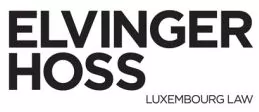- within Technology topic(s)
- with Finance and Tax Executives
- in United Kingdom
- with readers working within the Securities & Investment industries
Regulation (EU) 2023/1114 of the European Parliament and of the Council of 31 May 2023 on markets in crypto-assets, and amending Regulations (EU) No 1093/2010 and (EU) No 1095/2010 and Directives 2013/36/EU and (EU) 2019/1937
(Text with EEA relevance)
Recitals
THE EUROPEAN PARLIAMENT AND THE COUNCIL OF THE EUROPEAN UNION,
Having regard to the Treaty on the Functioning of the European Union, and in particular Article 114 thereof,
Having regard to the proposal from the European Commission,
After transmission of the draft legislative act to the national parliaments,
Having regard to the opinion of the European Central Bank1 ,
Having regard to the opinion of the European Economic and Social Committee2 ,
Acting in accordance with the ordinary legislative procedure3 ,
Whereas:
- It is important to ensure that Union legislative acts on financial services are fit for the digital age, and contribute to a future-proof economy that works for people, including by enabling the use of innovative technologies. The Union has a policy interest in developing and promoting the uptake of transformative technologies in the financial sector, including the uptake of distributed ledger technology (DLT). It is expected that many applications of distributed ledger technology, including blockchain technology, that have not yet been fully studied will continue to result in new types of business activity and business models that, together with the crypto-asset sector itself, will lead to economic growth and new employment opportunities for Union citizens.
- Crypto-assets are one of the main applications of distributed ledger technology. Crypto-assets are digital representations of value or of rights that have the potential to bring significant benefits to market participants, including retail holders of crypto-assets. Representations of value include external, nonintrinsic value attributed to a crypto-asset by the parties concerned or by market participants, meaning the value is subjective and based only on the interest of the purchaser of the crypto-asset. By streamlining capital-raising processes and enhancing competition, offers of crypto-assets could allow for an innovative and inclusive way of financing, including for small and medium-sized enterprises (SMEs). When used as a means of payment, crypto-assets can present opportunities in terms of cheaper, faster and more efficient payments, in particular on a cross-border basis, by limiting the number of intermediaries.
- Some crypto-assets, in particular those that qualify as financial instruments as defined in Directive 2014/65/EU of the European Parliament and of the Council4 , fall within the scope of existing Union legislative acts on financial services. Therefore, a full set of Union rules already applies to issuers of such crypto-assets and to firms conducting activities related to such crypto-assets.
- Other crypto-assets, however, fall outside of the scope of Union legislative acts on financial services. At present, there are no rules, other than those in respect of anti-money laundering, for the provision of services related to such unregulated crypto-assets, including for the operation of trading platforms for crypto-assets, the exchange of crypto-assets for funds or other crypto-assets, and providing custody and administration of crypto-assets on behalf of clients. The absence of such rules leaves holders of those crypto-assets exposed to risks, in particular in fields not covered by consumer protection rules. The absence of such rules can also result in substantial risks to market integrity, including in terms of market abuse as well as in terms of financial crime. To address those risks, some Member States have put in place specific rules for all, or a subset of, crypto-assets that fall outside the scope of Union legislative acts on financial services, and other Member States are considering whether to legislate in the field of cryptoassets.
- The absence of an overall Union framework for markets in crypto-assets can lead to a lack of user confidence in those assets, which could significantly hinder the development of a market in those assets and lead to missed opportunities in terms of innovative digital services, alternative payment instruments or new funding sources for Union companies. In addition, companies using crypto-assets would have no legal certainty on how their crypto-assets would be treated in the various Member States, which would undermine their efforts to use crypto-assets for digital innovation. The lack of an overall Union framework for markets in crypto-assets could also lead to regulatory fragmentation, which would distort competition in the internal market, make it more difficult for crypto-asset service providers to scale up their activities on a cross-border basis and would give rise to regulatory arbitrage. Markets in crypto-assets are still modest in size and do not at present pose a threat to financial stability. It is, however, possible that types of crypto-assets that aim to stabilise their price in relation to a specific asset or a basket of assets could in the future be widely adopted by retail holders, and such a development could raise additional challenges in terms of financial stability, the smooth operation of payment systems, monetary policy transmission or monetary sovereignty.
- A dedicated and harmonised framework for markets in crypto-assets is therefore necessary at Union level in order to provide specific rules for crypto-assets and related services and activities that are not yet covered by Union legislative acts on financial services. Such a framework should support innovation and fair competition, while ensuring a high level of protection of retail holders and the integrity of markets in crypto-assets. A clear framework should enable crypto-asset service providers to scale up their businesses on a cross-border basis and facilitate their access to banking services to enable them to run their activities smoothly. A Union framework for markets in crypto-assets should provide for the proportionate treatment of issuers of crypto-assets and crypto-asset service providers, thereby giving rise to equal opportunities in respect of market entry and the ongoing and future development of markets in cryptoassets. It should also promote financial stability and the smooth operation of payment systems, and address monetary policy risks that could arise from crypto-assets that aim to stabilise their price in relation to a specific asset or basket of assets. Proper regulation maintains the competitiveness of the Member States on international financial and technological markets and provides clients with significant benefits in terms of access to cheaper, faster and safer financial services and asset management. The Union framework for markets in crypto-assets should not regulate the underlying technology. Union legislative acts should avoid imposing an unnecessary and disproportionate regulatory burden on the use of technology, since the Union and the Member States seek to maintain competitiveness on a global market.
- The consensus mechanisms used for the validation of transactions in crypto-assets might have principal adverse impacts on the climate and other environment-related adverse impacts. Such consensus mechanisms should therefore deploy more environmentally-friendly solutions and ensure that any principal adverse impact that they might have on the climate, and any other environment-related adverse impact, are adequately identified and disclosed by issuers of crypto-assets and crypto-asset service providers. When determining whether adverse impacts are principal, account should be taken of the principle of proportionality and the size and volume of the crypto-asset issued. The European Supervisory Authority (European Securities and Markets Authority) (ESMA) established by Regulation (EU) No 1095/2010 of the European Parliament and of the Council5 , in cooperation with the European Supervisory Authority (European Banking Authority) (EBA) established by Regulation (EU) No 1093/2010 of the European Parliament and of the Council6 , should therefore be mandated to develop draft regulatory technical standards to further specify the content, methodologies and presentation of information in relation to sustainability indicators with regard to adverse impacts on climate and other environment‐ related adverse impacts, and to outline key energy indicators. The draft regulatory technical standards should also ensure coherence of disclosures by issuers of crypto-assets and by crypto-asset service providers. When developing the draft regulatory technical standards, ESMA should take into account the various types of consensus mechanisms used for the validation of transactions in crypto-assets, their characteristics and the differences between them. ESMA should also take into account existing disclosure requirements, ensure complementarity and consistency, and avoid increasing the burden on companies.
- Markets in crypto-assets are global and thus inherently cross-border. Therefore, the Union should continue to support international efforts to promote convergence in the treatment of crypto-assets and crypto-asset services through international organisations or bodies such as the Financial Stability Board, the Basel Committee on Banking Supervision and the Financial Action Task Force.
- Union legislative acts on financial services should be guided by the principles of 'same activities, same risks, same rules' and of technology neutrality. Therefore, crypto-assets that fall under existing Union legislative acts on financial services should remain regulated under the existing regulatory framework, regardless of the technology used for their issuance or their transfer, rather than this Regulation. Accordingly, this Regulation expressly excludes from its scope crypto-assets that qualify as financial instruments as defined in Directive 2014/65/EU, those that qualify as deposits as defined in Directive 2014/49/EU of the European Parliament and of the Council7 , including structured deposits as defined in Directive 2014/65/EU, those that qualify as funds as defined in Directive (EU) 2015/2366 of the European Parliament and of the Council8 , except if they qualify as electronic money tokens ('e-money tokens'), those that qualify as securitisation positions as defined in Regulation (EU) 2017/2402 of the European Parliament and of the Council9 , and those that qualify as non-life or life insurance contracts, pension products or schemes and social security schemes. Having regard to the fact that electronic money and funds received in exchange for electronic money should not be treated as deposits in accordance with Directive 2009/110/EC of the European Parliament and of the Council10, e-money tokens cannot be treated as deposits that are excluded from the scope of this Regulation.
- This Regulation should not apply to crypto-assets that are unique and not fungible with other cryptoassets, including digital art and collectibles. The value of such unique and non-fungible crypto-assets is attributable to each crypto-asset's unique characteristics and the utility it gives to the holder of the token. Nor should this Regulation apply to crypto-assets representing services or physical assets that are unique and non-fungible, such as product guarantees or real estate. While unique and non-fungible crypto-assets might be traded on the marketplace and be accumulated speculatively, they are not readily interchangeable and the relative value of one such crypto-asset in relation to another, each being unique, cannot be ascertained by means of comparison to an existing market or equivalent asset. Such features limit the extent to which those crypto-assets can have a financial use, thus limiting risks to holders and the financial system and justifying their exclusion from the scope of this Regulation.
- The fractional parts of a unique and non-fungible crypto-asset should not be considered unique and nonfungible. The issuance of crypto-assets as non-fungible tokens in a large series or collection should be considered an indicator of their fungibility. The mere attribution of a unique identifier to a crypto-asset is not, in and of itself, sufficient to classify it as unique and non-fungible. The assets or rights represented should also be unique and non-fungible in order for the crypto-asset to be considered unique and nonfungible. The exclusion of crypto-assets that are unique and non-fungible from the scope of this Regulation is without prejudice to the qualification of such crypto-assets as financial instruments. This Regulation should also apply to crypto-assets that appear to be unique and non-fungible, but whose de facto features or whose features that are linked to their de facto uses, would make them either fungible or not unique. In that regard, when assessing and classifying crypto-assets, competent authorities should adopt a substance over form approach whereby the features of the crypto-asset in question determine the classification and not its designation by the issuer.
- It is appropriate to exclude certain intragroup transactions and some public entities from the scope of this Regulation as they do not pose risks to investor protection, market integrity, financial stability, the smooth operation of payment systems, monetary policy transmission or monetary sovereignty. Public international organisations that are exempt include the International Monetary Fund and the Bank for International Settlements.
- Digital assets issued by central banks acting in their monetary authority capacity, including central bank money in digital form, or crypto-assets issued by other public authorities, including central, regional and local administrations, should not be subject to the Union framework for markets in crypto-assets. Nor should related services provided by such central banks when acting in their monetary authority capacity or other public authorities be subject to that Union framework.
- For the purposes of ensuring a clear delineation between, on the one hand, crypto-assets covered by this Regulation and, on the other hand, financial instruments, ESMA should be mandated to issue guidelines on the criteria and conditions for the qualification of crypto-assets as financial instruments. Those guidelines should also allow for a better understanding of the cases where crypto-assets that are otherwise considered unique and not fungible with other crypto-assets might qualify as financial instruments. In order to promote a common approach towards the classification of crypto-assets, EBA, ESMA and the European Supervisory Authority (European Insurance and Occupational Pensions Authority) (EIOPA), established by Regulation (EU) No 1094/2010 of the European Parliament and of the Council11 (the 'European Supervisory Authorities' or 'ESAs') should promote discussions on such classification. Competent authorities should be able to request opinions from the ESAs on the classification of cryptoassets, including classifications proposed by offerors or persons seeking admission to trading. Offerors or persons seeking admission to trading are primarily responsible for the correct classification of cryptoassets, which might be challenged by the competent authorities, both before the date of publication of the offer and at any time thereafter. Where the classification of a crypto-asset appears to be inconsistent with this Regulation or other relevant Union legislative acts on financial services, the ESAs should make use of their powers under Regulations (EU) No 1093/2010, (EU) No 1094/2010 and (EU) No 1095/2010 in order to ensure a consistent and coherent approach to such classification.
- Pursuant to Article 127(2), fourth indent, of the Treaty on the Functioning of the European Union (TFEU), one of the basic tasks to be carried out through the European System of Central Banks (ESCB) is to promote the smooth operation of payment systems. The European Central Bank (ECB) may, pursuant to Article 22 of Protocol No 4 on the Statute of the European System of Central Banks and of the European Central Bank attached to the Treaties, make regulations to ensure efficient and sound clearing and payment systems within the Union and with other countries. To that end, the ECB has adopted regulations concerning requirements for systemically important payment systems. This Regulation is without prejudice to the responsibilities of the ECB and the national central banks in the ESCB to ensure efficient and sound clearing and payment systems within the Union and with third countries. Consequently, and in order to prevent the possible creation of parallel sets of rules, EBA, ESMA and the ECB should cooperate closely when preparing the relevant draft technical standards under this Regulation. Furthermore, it is crucial for the ECB and the national central banks to have access to information when fulfilling their tasks relating to the oversight of payment systems, including clearing of payments. In addition, this Regulation should be without prejudice to Council Regulation (EU) No 1024/201312 and should be interpreted in such a way that it is not in conflict with that Regulation.
- Any legislative act adopted in the field of crypto-assets should be specific and future-proof, be able to keep pace with innovation and technological developments and be founded on an incentive-based approach. The terms 'crypto-assets' and 'distributed ledger technology' should therefore be defined as widely as possible to capture all types of crypto-assets that currently fall outside the scope of Union legislative acts on financial services. Any legislative act adopted in the field of crypto-assets should also contribute to the objective of combating money laundering and terrorist financing. For that reason, entities offering services falling within the scope of this Regulation should also comply with applicable anti-money laundering and counter-terrorist financing rules of the Union, which integrate international standards.
- Digital assets that cannot be transferred to other holders do not fall within the definition of crypto-assets. Therefore, digital assets that are accepted only by the issuer or the offeror and that are technically impossible to transfer directly to other holders should be excluded from the scope of this Regulation. An example of such digital assets includes loyalty schemes where the loyalty points can be exchanged for benefits only with the issuer or offeror of those points.
- This Regulation classifies crypto-assets into three types, which should be distinguished from one another and subject to different requirements depending on the risks they entail. The classification is based on whether the crypto-assets seek to stabilise their value by reference to other assets. The first type consists of crypto-assets that aim to stabilise their value by referencing only one official currency. The function of such crypto-assets is very similar to the function of electronic money as defined in Directive 2009/110/EC. Like electronic money, such crypto-assets are electronic surrogates for coins and banknotes and are likely to be used for making payments. Those crypto-assets should be defined in this Regulation as 'e-money tokens'. The second type of crypto-assets concerns 'asset-referenced tokens', which aim to stabilise their value by referencing another value or right, or combination thereof, including one or several official currencies. That second type covers all other crypto-assets, other than e-money tokens, whose value is backed by assets, so as to avoid circumvention and to make this Regulation future-proof. Finally, the third type consists of crypto-assets other than asset-referenced tokens and e-money tokens, and covers a wide variety of crypto-assets, including utility tokens.
- At present, despite their similarities, electronic money and crypto-assets referencing an official currency differ in some important aspects. Holders of electronic money as defined in Directive 2009/110/EC are always provided with a claim against the electronic money issuer and have a contractual right to redeem, at any moment and at par value, the monetary value of the electronic money held. By contrast, some crypto-assets referencing an official currency do not provide their holders with such a claim against the issuers of such crypto-assets and could fall outside the scope of Directive 2009/110/EC. Other cryptoassets referencing an official currency do not provide a claim at par value with the currency they are referencing or they limit the redemption period. The fact that holders of such crypto-assets do not have a claim against the issuers of such crypto-assets, or that such claim is not at par value with the currency those crypto-assets are referencing, could undermine the confidence of holders of those crypto-assets. Accordingly, to avoid circumvention of the rules laid down in Directive 2009/110/EC, any definition of emoney tokens should be as wide as possible to capture all types of crypto-assets referencing a single official currency. In addition, strict conditions on the issuance of e-money tokens should be laid down, including an obligation for e-money tokens to be issued either by a credit institution authorised under Directive 2013/36/EU of the European Parliament and of the Council13, or by an electronic money institution authorised under Directive 2009/110/EC. For the same reason, issuers of e-money tokens should ensure that holders of such tokens can exercise their right to redeem their tokens at any time and at par value against the currency referencing those tokens. Because e-money tokens are crypto-assets and can raise new challenges in terms of protection of retail holders and market integrity that are specific to crypto-assets, they should also be subject to the rules laid down in this Regulation to address those challenges.
- Given the different risks and opportunities raised by crypto-assets, it is necessary to lay down rules for offerors and persons seeking admission to trading of crypto-assets other than asset-referenced tokens and e-money tokens, as well as for issuers of asset-referenced tokens and e-money tokens. Issuers of crypto-assets are entities that have control over the creation of crypto-assets.
- It is necessary to lay down specific rules for entities that provide services related to crypto-assets. A first category of such services consists of ensuring the operation of a trading platform for crypto-assets, exchanging crypto-assets for funds or other crypto-assets, providing custody and administration of cryptoassets on behalf of clients, and providing transfer services for crypto-assets on behalf of clients. A second category of such services consists of the placing of crypto-assets, the reception or transmission of orders for crypto-assets on behalf of clients, the execution of orders for crypto-assets on behalf of clients, providing advice on crypto-assets and providing portfolio management of crypto-assets. Any person that provides crypto-asset services on a professional basis in accordance with this Regulation should be deemed to be a 'crypto-asset service provider'.
- This Regulation should apply to natural and legal persons and certain other undertakings and to the cryptoasset services and activities performed, provided or controlled, directly or indirectly, by them, including when part of such activities or services is performed in a decentralised manner. Where crypto-asset services are provided in a fully decentralised manner without any intermediary, they should not fall within the scope of this Regulation. This Regulation covers the rights and obligations of issuers of crypto-assets, offerors, persons seeking admission to trading of crypto-assets and crypto-asset service providers. Where crypto-assets have no identifiable issuer, they should not fall within the scope of Title II, III or IV of this Regulation. Crypto-asset service providers providing services in respect of such crypto-assets should, however, be covered by this Regulation.
- To ensure that all offers to the public of crypto-assets other than asset-referenced tokens or e-money tokens, which can potentially have a financial use, or all admissions of crypto-assets to trading on a trading platform for crypto-assets ('admission to trading'), in the Union, are properly monitored and supervised by competent authorities, all offerors or persons seeking admission to trading should be legal persons.
- In order to ensure their protection, prospective retail holders of crypto-assets should be informed of the characteristics, functions and risks of the crypto-assets that they intend to purchase. When making an offer to the public of crypto-assets other than asset-referenced tokens or e-money tokens or when seeking admission to trading of such crypto-assets in the Union, offerors or persons seeking admission to trading should draw up, notify to their competent authority and publish an information document containing mandatory disclosures ('a crypto-asset white paper'). A crypto-asset white paper should contain general information on the issuer, offeror or person seeking admission to trading, on the project to be carried out with the capital raised, on the offer to the public of crypto-assets or on their admission to trading, on the rights and obligations attached to the crypto-assets, on the underlying technology used for such cryptoassets and on the related risks. However, the crypto-asset white paper should not contain a description of risks that are unforeseeable and very unlikely to materialise. The information contained in the cryptoasset white paper as well as in the relevant marketing communications, such as advertising messages and marketing material, and including through new channels such as social media platforms, should be fair, clear and not misleading. Advertising messages and marketing material should be consistent with the information provided in the crypto-asset white paper.
- Crypto-asset white papers, including their summaries, and the operating rules of trading platforms for crypto-assets should be drawn up in at least one of the official languages of the home Member State and of any host Member State or, alternatively, in a language customary in the sphere of international finance. At the time of adoption of this Regulation, the English language is the language customary in the sphere of international finance but that could evolve in the future.
- In order to ensure a proportionate approach, no requirements of this Regulation should apply to offers to the public of crypto-assets other than asset-referenced tokens or e-money tokens that are offered for free or that are automatically created as a reward for the maintenance of a distributed ledger or the validation of transactions in the context of a consensus mechanism. In addition, no requirements should apply to offers of utility tokens providing access to an existing good or service, enabling the holder to collect the good or use the service, or when the holder of the crypto-assets has the right to use them only in exchange for goods and services in a limited network of merchants with contractual arrangements with the offeror. Such exemptions should not include crypto-assets representing stored goods that are not intended to be collected by the purchaser following the purchase. Neither should the limited network exemption apply to crypto-assets that are typically designed for a continuously growing network of service providers. The limited network exemption should be evaluated by the competent authority each time that an offer, or the aggregate value of more than one offer, exceeds a certain threshold, meaning that a new offer should not automatically benefit from an exemption of a previous offer. Those exemptions should cease to apply when the offeror, or another person acting on the offeror's behalf, communicates the offeror's intention of seeking admission to trading or the exempted crypto-assets are admitted to trading.
Footnotes
1 OJ C 152, 29.4.2021, p. 1.
2 OJ C 155, 30.4.2021, p. 31.
3 Position of the European Parliament of 20 April 2023 (not yet published in the Official Journal) and decision of the Council of 16 May 2023.
4 Directive 2014/65/EU of the European Parliament and of the Council of 15 May 2014 on markets in financial instruments and amending Directive 2002/92/EC and Directive 2011/61/EU (OJ L 173, 12.6.2014, p. 349).
5 Regulation (EU) No 1095/2010 of the European Parliament and of the Council of 24 November 2010 establishing a European Supervisory Authority (European Securities and Markets Authority), amending Decision No 716/2009/EC and repealing Commission Decision 2009/77/EC (OJ L 331, 15.12.2010, p. 84).
6 Regulation (EU) No 1093/2010 of the European Parliament and of the Council of 24 November 2010 establishing a European Supervisory Authority (European Banking Authority), amending Decision No 716/2009/EC and repealing Commission Decision 2009/78/EC (OJ L 331, 15.12.2010, p. 12).
7 Directive 2014/49/EU of the European Parliament and of the Council of 16 April 2014 on deposit guarantee schemes (OJ L 173, 12.6.2014, p. 149).
8 Directive (EU) 2015/2366 of the European Parliament and of the Council of 25 November 2015 on payment services in the internal market, amending Directives 2002/65/EC, 2009/110/EC and 2013/36/EU and Regulation (EU) No 1093/2010, and repealing Directive 2007/64/EC (OJ L 337, 23.12.2015, p. 35).
9 Regulation (EU) 2017/2402 of the European Parliament and of the Council of 12 December 2017 laying down a general framework for securitisation and creating a specific framework for simple, transparent and standardised securitisation, and amending Directives 2009/65/EC, 2009/138/EC and 2011/61/EU and Regulations (EC) No 1060/2009 and (EU) No 648/2012 (OJ L 347, 28.12.2017, p. 35).
10 Directive 2009/110/EC of the European Parliament and of the Council of 16 September 2009 on the taking up, pursuit and prudential supervision of the business of electronic money institutions amending Directives 2005/60/EC and 2006/48/EC and repealing Directive 2000/46/EC (OJ L 267, 10.10.2009, p. 7).
11 Regulation (EU) No 1094/2010 of the European Parliament and of the Council of 24 November 2010 establishing a European Supervisory Authority (European Insurance and Occupational Pensions Authority), amending Decision No 716/2009/EC and repealing Commission Decision 2009/79/EC (OJ L 331, 15.12.2010, p. 48).
12 Council Regulation (EU) No 1024/2013 of 15 October 2013 conferring specific tasks on the European Central Bank concerning policies relating to the prudential supervision of credit institutions (OJ L 287, 29.10.2013, p. 63).
13 Directive 2013/36/EU of the European Parliament and of the Council of 26 June 2013 on access to the activity of credit institutions and the prudential supervision of credit institutions, amending Directive 2002/87/EC and repealing Directives 2006/48/EC and 2006/49/EC (OJ L 176, 27.6.2013, p. 338).
To view the full article, click here.
The content of this article is intended to provide a general guide to the subject matter. Specialist advice should be sought about your specific circumstances.








